Can I Ever Get My Calves Working Again
Runners reporting the feeling of annoyingly recurring tight calves are one of the most common complaints I hear every bit a physiotherapist.
Tight Calves are a Big Problem for Runners
Across the in practice countless reports I accept heard over the final 11 years of treating clients of runners reporting annoying tight calves, I really gained an appreciation of the size of the trouble when in May 2016 I posted the below Facebook video postal service quickly on leaving the practice. The video went viral (run into below).
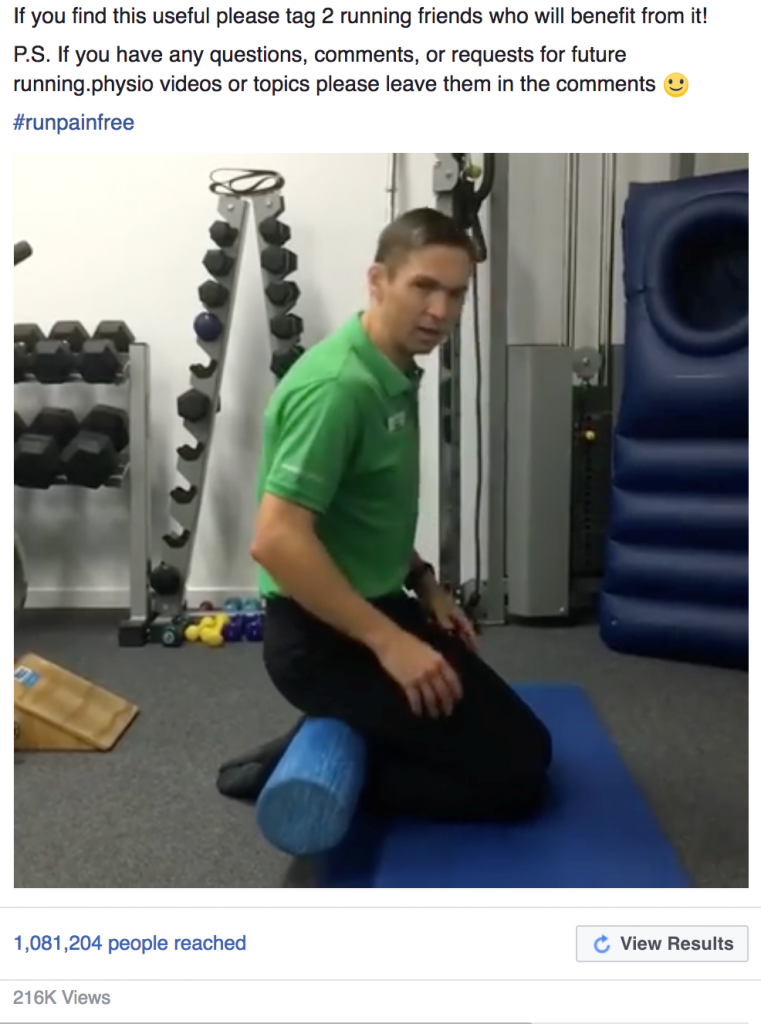
Within v hours the video had over 13,000 views and within 5 days more than 150,000 views. To engagement, the video of this being my preferred dogie release technique has had over 218,814 views. Crazy.
Then clearly tight calves are a problem for runners!
 What runners with tight calves typically say
What runners with tight calves typically say
Runners volition often with not bad frustration tell me:
- I am stretching all the fourth dimension, I just don't get it, they won't go abroad.
- I'k using my foam roller all the fourth dimension, and they still feel tight.
- I'm getting regular massage work, and I tin't seem to get on meridian of information technology.
In that location'southward More to It Than Just This Exercise
However if you were to only turn to the above full cream roller exercise as your solution to your tight calves, while therapeutically feeling better volition exist a effect, it may not be plenty to prepare your recurring tight calf problem.
What I have found to be true over the many years and hundreds of runners that I have helped get on elevation of recurringly tight calves is that what was missing is not more stretching or time on the foam roller, but rather forcefulness.
What was missing is non more stretching or time on the cream roller, but rather a force. #performbetter @pogophysio Click To Tweet
The Importance of Strengthening Your Calves
A high level of force of both the calf muscles (gastrocnemius) and the underlying soleus musculus (see image below), is required to get on superlative of recurring calf tightness.
I am oft heard advising clients that 'tight calves are weak calves'.
When runners hear this I know that they are oft not 'sold' on the concept, and question what exactly practice I mean by this maxim. Their initial scepticism is only further heightened when I advise them to stop stretching all together in order to accost their recurring calf tightness, and instead, divert their energy into the beneath 2 strengthening exercises in club to get on top of their dogie tightness issues.
I am often heard advising clients that 'tight calves are weak calves'. #performbetter @pogophysio Click To Tweet
Key Calf Strength Exercises: home and gym based.
The exercises runners wishing to address recurring calf tightness must concentrate on can be broken down into dwelling house-based and gym based. The home-based exercises one-two beneath are designed to have a neuro-motor or 'activation' type outcome. They likewise provide the basis for building a level of gastrocnemius/soleus endurance.
In addition to the home-based exercises, runners can also do good from 'calf' (gastrocnemius/soleus) muscle strengthening work in the gym as outlined below.
Gym Based Calf Forcefulness Exercises
The exercises are best performed in a smith rack. The do good of the smith rack is that information technology allows for isolation of the muscle/tendon unit which facilitates ameliorate strength gains. Alternatives to smith rack piece of work can include calf heighten machines, or kettlebell holds with raises. Notwithstanding, I much adopt to see runners completing the exercises in the smith rack.
For gastrocnemius strengthening refer to the below video:
Aim for:
- the first two weeks: brainstorm with 3-4 sets of x12reps dull pace (3s reps) moderate resistance with 2mins recovery.
- beyond the following ii weeks: four sets of 4-10x reps slow pace (3s reps) heavy resistance with ii-3mins recovery.
For soleus strengthening refer to the below video:
Aim for:
- the first two weeks: begin with 3-4 sets of x12reps slow pace (3s reps) moderate resistance with 2mins recovery.
- beyond the following 2 weeks: 4 sets of 4-10 xreps wearisome stride (3s reps) heavy resistance with two-3mins recovery.
For more information on the benefit of strength preparation in the gym with heavy loads listen to Episode 74 of The Physical Functioning Testify podcast featuring running researcher, Associate Professor and Physical Therapist Dr Rich Willy Here>>
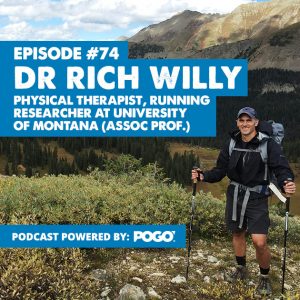
1. Single Leg Dogie Raises.
View the video below for a demonstration of single leg calf raises.
Instructions:
- Start with three×12 reps
- Progress to 3×20 reps
- And then 1×thirty continuous reps
- And so 1×l continuous reps
- To progress further this tin can be achieved past adding weight (e.1000. dumbbells in one hand), or inside a calf enhance machine or smith rack at the gym. Sentinel this video on how to rehab the Achilles tendon HERE>> .
- Be sure to take 3s per rep, and to push through the start and second toes (as opposed to rolling on to the exterior of the foot).
- Also exist careful to not stone your body weight forrard and backwards to generate momentum as you lot fatigue, or begin to flex (curve) the knee.
*This is critical if y'all are aiming to run one-half marathon distances and beyond.
I observe this is disquisitional if you are aiming to run half marathon distances and beyond. #performbetter @pogophysio Click To Tweet
I used to instruct runners that 30 calf raises was the goal. At present I instruct runners that 50 single leg calf raises is the goal*. Our dogie muscles are a key propulsive element of our running, generating the final bit of strength at the time of toe-off during the gait cycle.
two. Soleus Wall Squats
Often times strengthening of the soleus is ignored. Failure to strengthen the soleus with an attempt on the gastrocnemius muscles (in a higher place exercise 1) can issue in ongoing feelings of tight calves.
Instructions:
- Start with 30s holds 3-4 reps.
- Progress to 45s holds 3-4reps.
- To progress further add weight with dumbbells in both hands.
In addition to the in a higher place ii strength exercises that runners can work on at abode
3. Full Foam Roller Sit.
I stumbled on this one 24-hour interval when I felt like I needed to trigger my calf muscles only felt too lazy to utilize the typical method of overlapping my extended legs out in front of me on the total foam roller. Instead, I thought what would happen if I just sat on the full foam roller and shifted my weight gently side to side. Information technology felt effective so I posted it on Facebook on the running.physio community and it went viral equally outlined higher up.
So if you feel similar you need to do something for your tightness, rather than stretch try this foam roller practise.
Instructions:
- Aim for 1-2mins, or every bit long as you experience you need (4-5mins max).
- Gently press your body-weight from one side to the side by side. If y'all have a long full foam roller, y'all can lever the edges downwardly with your hands, if just a short full foam roller you lot can only 'rock' your body weight.
Ane added bonus of this is the stretch y'all feel at the front end of your ankles and the tops of your anxiety. These structures are rarely mobilised or stretched out.
How Often Should You lot Practice Exercises 1-3?
In summary, if you feel like your calves are recurrently tight, try the above three exercises. Completing the higher up three exercises I would suggest should be in proportion to:
- The amount of running y'all are doing. The more than you are running the more frequent these exercises can be completed.
- The intensity of tightness y'all are feeling. If you feel high dress of tightness complete the exercises more frequently due east.g. four-5x week, equally opposed to 1-2 x calendar week.
Lastly, while a deficit of strength and associated endurance of the gastrocnemius and soleus muscles is typically the primal commuter of feelings of recurring dogie muscle tightness, a runner will also need to consider other potential contributing factors such as outlined in the below diagram.
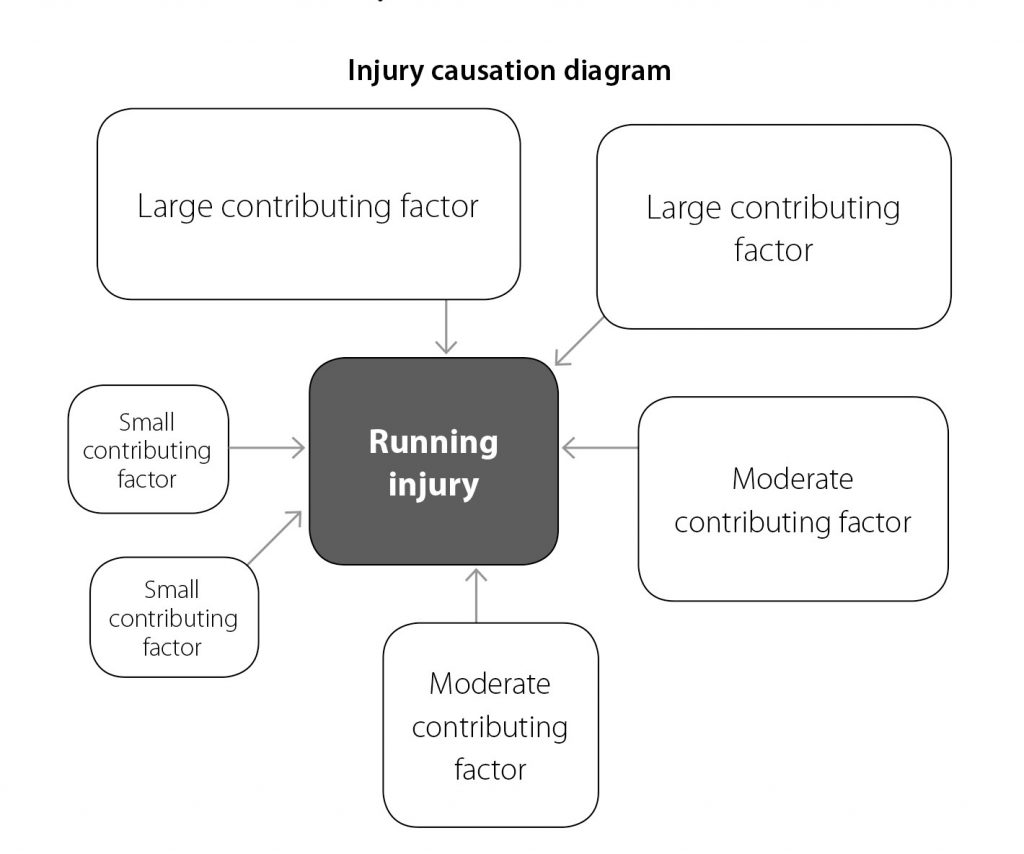
Source: Page 63, You lot CAN Run Pain Free! A Runner'south 5 Step Guide to Enjoying Injury-Free and Faster Running
Other potential contributing factors that can crusade recurring calf tightness for runners can include:
- Cadency (over-striding running technique). One of many adverse effects of this tin can be essentially greater impact forces on landing, than the runner who runs with a quick cadence and far less impact loading of all lower limb structures. Click through to read more, Technique Primary 1: Running Cadence .
- Runner's frame (or body) weight. Surplus frame weight can create tightness due to the excessive loads being placed on the hard working calves at the time of impact (shock absorption) and also the time of propulsion generation during toe-off. To read more click through, The Part That Body Weight Plays in Injury Onset .
- Footwear. Shoes that accept lost their shock assimilation abilities can create adverse loading at the time of impact on all lower limb structures including the calves. If you need an insight into which shoes to buy next, click on Which Running Shoes Should I Buy .
- The strength of the rest of the kinetic chain that includes the hips, and 'core'. Click through for some foundational hip strengthening exercises, 4 Must Know Running Strength Exercises .
Struggling with Recurring Dogie Strains?
If you're a runner struggling with recurring calf strains, as opposed to feelings of calf tightness strengthening as outlined in exercises ane and 2 can likewise exist key to getting on top of your injury design.
Click through to acquire more about how to get on top of recurring calf strains, Say Bye to Recurring Calf Strains .
All the best with getting on top of your dogie tightness. Let me know if you accept any questions, and equally your success over at the Running.Physio Facebook community .
Related
Blog: How to rehab calf strains in runners HERE>>
Physio With A Stop Line,
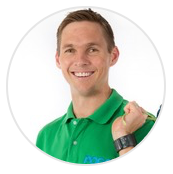
Brad Beer (APAM)
Physiotherapist (APAM)
Writer 'You Can Run Pain Free!'
Founder POGO Physio
Featured in the Elevation fifty Physical Therapy Blog
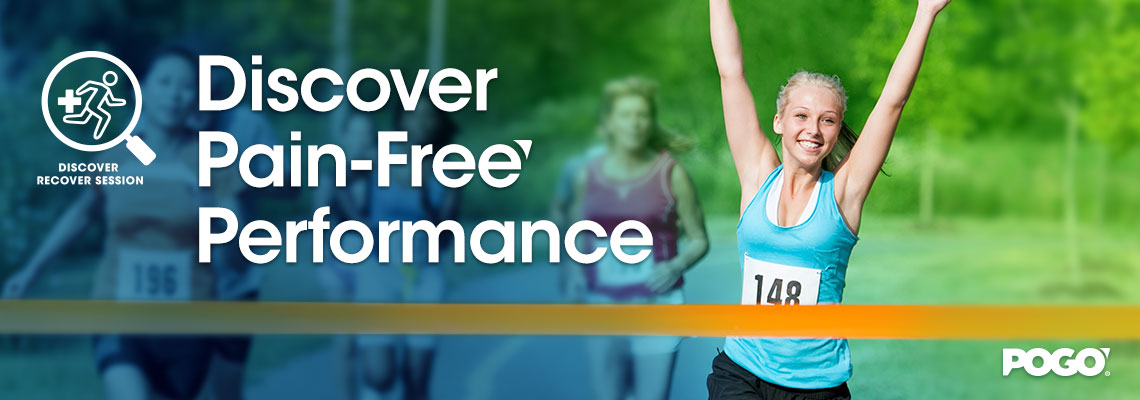
Yous have Successfully Subscribed!
Source: https://www.pogophysio.com.au/blog/how-runners-can-overcome-tight-calves/
Postar um comentário for "Can I Ever Get My Calves Working Again"